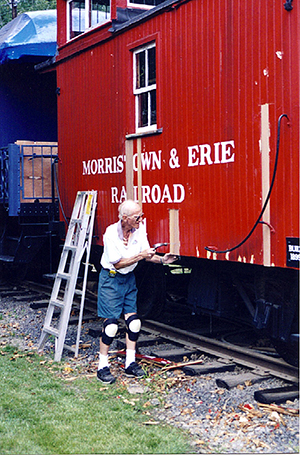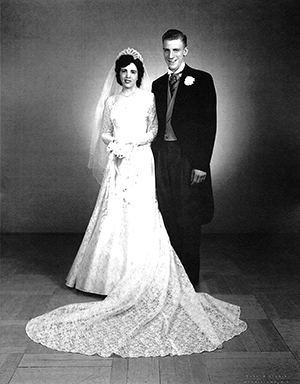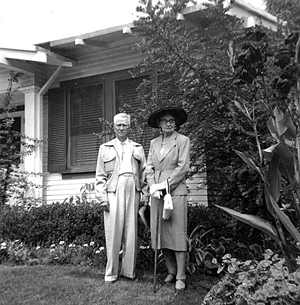Museum Founding & Charter Member & Trustee December 24, 1928 – June 8, 2007

“Anything in this world begins with a Dream. Earle Gil had such a Dream.”

So began the opening narration of the 1990 Hopewell Productions video documentary, “The Rise and Fall of the Morris County Central Railroad”. In the opening scene, as the voice-over continues, Earle is seen lovingly polishing the headlight from ‘Old Number 385’, on display at the the Whippany Railway Museum. During the next few minutes, Earle gives the viewers an insight into how he came to be a key player in the Railroad Preservation movement during the early 1960’s.

“I’ve always been interested in Railroading. Steam was starting to die in the United States, and I wanted to be a part of preserving it.”
For the better part of nearly a half a century, Earle was always on the go, whether in the thick of it at the Morris County Central (MCC) at Whippany or later at Newfoundland, NJ., or sometimes many miles away, in the background, but always thinking of the Railroads of old, and his beloved Steam Locomotives.


Earle’s final years were spent actively working at the Museum, helping to repair and restore any number of things from locomotives and rolling stock to creating new exhibits for the visiting public to enjoy. It seemed as if Earle would go on forever. His energy was boundless, his talents and enthusiasm for what he was doing was immeasurable. But the “Old Man” (as he was affectionately nick-named) grew tired. He worked feverishly to complete so many things in so little time. After an 18-month battle with cancer, Earle passed away on Friday, June 8, 2007.

Earle was born on Christmas Eve, December 24, 1928 in Mountain Lakes, New Jersey to Carlos and Dorothy Henriquez-Gil, the seventh of seven children. His Father, Carlos Henriquez-Gil was born in Madrid, Spain and was said to have been a brilliant individual…having graduated college at the age of 16. As an adult, Carlos was employed as the Export Manager for the A.C. Gilbert Co., the makers of the legendary American Flyer model trains and the equally famous Erector Sets.



Several years after Earle’s birth, the family moved to “Thornwood Farms” at number 4 Whippany Road, Morristown, NJ. The 28-room farmhouse with its 11 fireplaces was on an idyllic setting where the family raised horses, chickens and sheep. From all accounts the family lived comfortably, even during the darkest days of the Great Depression of the 1930’s. Photos still exist of a young Earle sitting at the controls of his extensive American Flyer model railroad set up in a large, upper room of the farmhouse.




During his high school years, Earle went to work at a local drugstore…his first paid job. The years flew on, and as warclouds gathered across foreign lands, people everywhere wondered how long America would be able to remain a neutral bystander as the Axis Powers marched across Europe and the Pacific. It didn’t take long, as the U.S. joined the global conflict after its Naval base at Pearl Harbor was attacked on December 7, 1941. Due to his age, Earle narrowly missed serving in World War II, but when he turned 18, he enlisted in the U.S. Army. He received his basic training at Fort Dix, NJ and was stationed in Occupied Japan for a short period of time.

At the end of his military tour of duty and honorable discharge, Earle returned home to New Jersey and soon began dating Virginia Esposito.
When Earle and Virginia married on May 7, 1950 they lived in the huge barn at ‘Thornwood’ farm for several months until their new home was built in Morris Plains, NJ. Earle converted the loft of the barn into living quarters, complete with a 28′ x 15′ bedroom, living room, kitchen, balcony, and eventually a bathroom. The barn was so large that the ground floor could accommodate eight large automobiles. Earle wound up enclosing the rambling porch of the farmhouse and that became the “Railroad Room” for his growing collection of American Flyer and H.O. gauge model trains and railroad memorabilia.


In May 1952 Earle mailed a short letter to the Morristown & Erie Railroad (M&E), inquiring about job opportunities. At the time there were no positions available, but years later Earle would find himself working for the M&E as the General Maintenance Foreman during the early-1970’s. Times have certainly changed from those long-ago days when a person could make a contact and personal introduction for a job with just a few strokes of a pen and a simple letter of inquiry.


In the early-1950’s Carlos and Dorothy moved to California and later, Florida. By the end of the decade, Earle and Virginia were living in a larger, newer home in Parsippany, NJ with their children Earl, Jr. and Nancy (Susan would arrive a bit later on). Sadly, “Thornwood Farms” by then empty, was soon to fall to the wrecking ball.


Throughout the 1950’s and early 1960’s Earle and his family would travel throughout Canada and the Southeastern United States, in an effort to witness and document on film, the final steam-powered operations of the large Canadian railways and the unique American shortline railroads that hauled coal, lumber and industrial products through the rural areas they served.
Earle’s photos, slides and home movies of the final steam operations of such American rail icons like the Buffalo Creek & Gauley, the Graham County Railroad, the East Tennessee & Western North Carolina R.R., as well as the huge steam locomotives running out their last miles on the Canadian National and Canadian Pacific are historic in their own right. He also documented many of the famous Reading Railroad “Iron Horse Rambles” of the early 1960’s.





